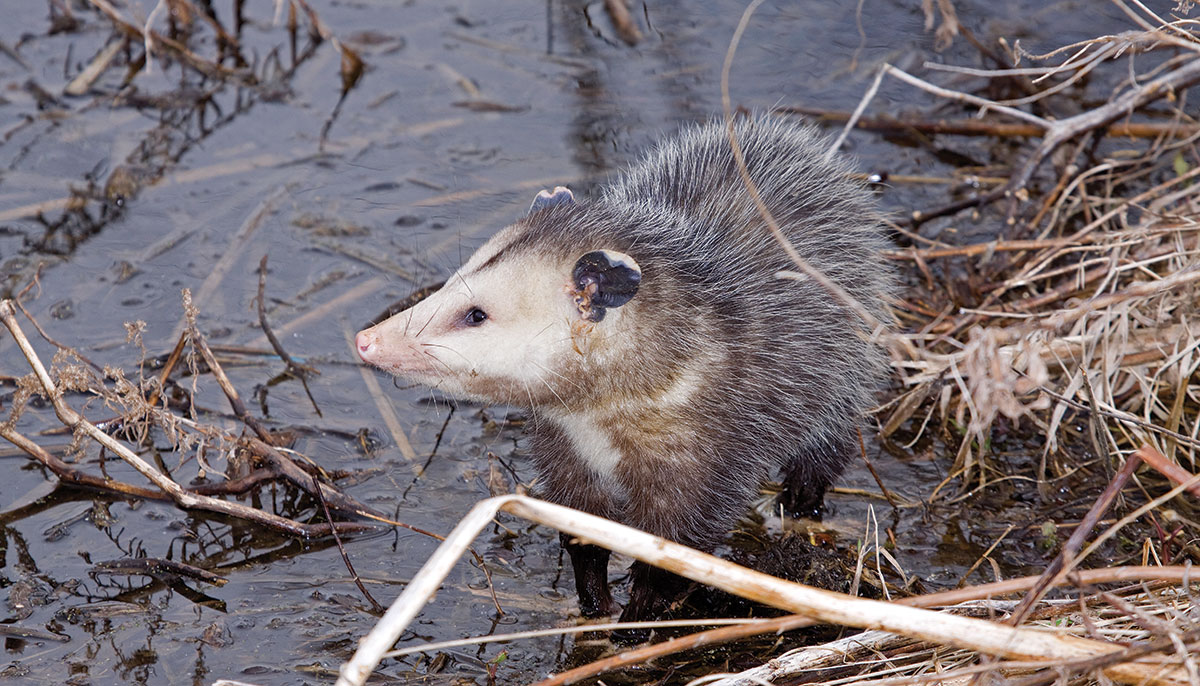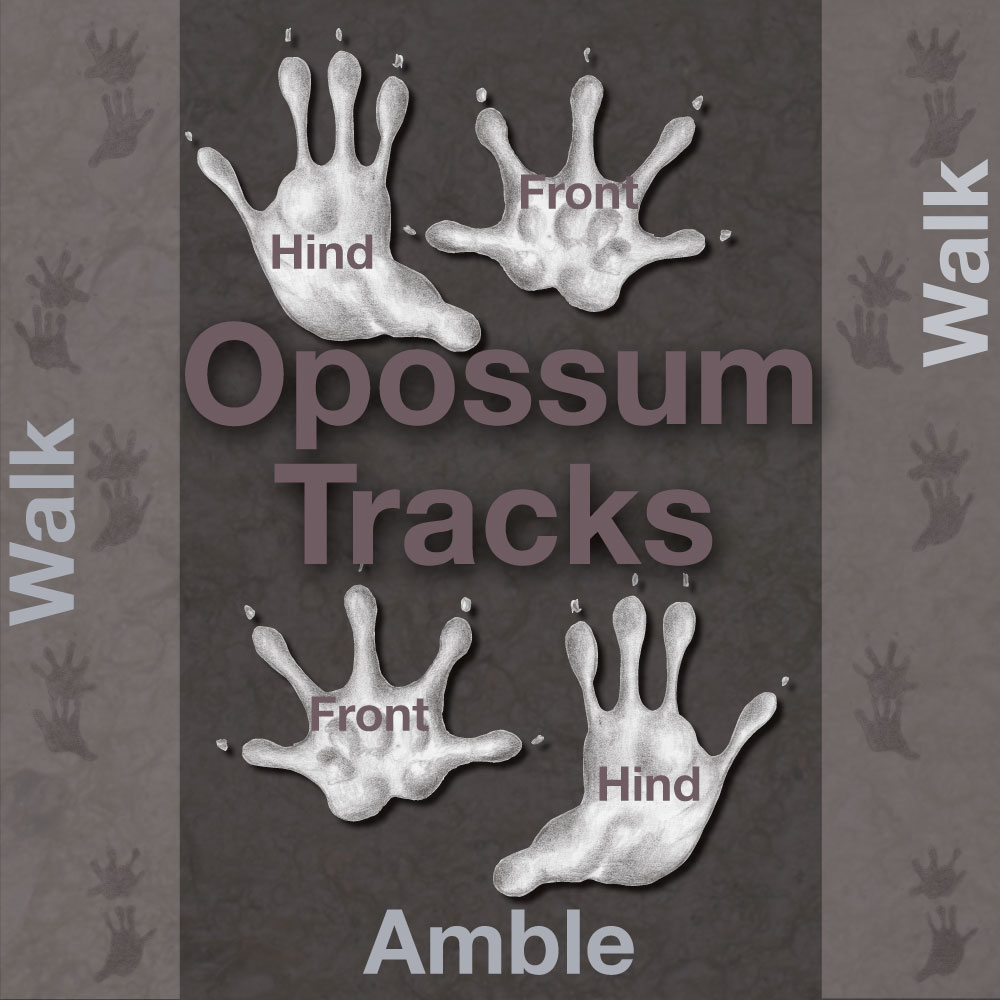
Photo by Michael R. Jeffords



Photo by Michael R. Jeffords
The Virginia opossum (Didelphis virginiana) is the only marsupial to inhabit the United States and one of the few wild animals that cannot be confused with another species. Once you’ve seen one, you’ll never forget it. The pointed nose; the scaly, hairless tail; and the overwhelming scruffy look sets it apart from all others.

Opossums are at home in woodlands, but they are extremely adaptable, hence their long tenure on planet Earth. The earliest Virginia opossum remains have been dated to the Sangamon Interglacial Stage of the Pleistocene Epoch more than 100,000 years ago. This adaptability easily makes them at home in your backyard.
It doesn’t take much clutter or disarray to invite them into your near environment. Any type of refuse pile—especially if it contains tree branches—that offers overhead protection as well as a space to crawl into may be used. Any older outbuildings with wood floors over joists are a favorite if the air spaces under the floors are accessible from the outside. And it takes just one such “hole-up” opportunity in an entire neighborhood to “bless” everyone nearby with the opportunity to see opossums from dusk into the night. In rural areas, hollow logs, the bases of hollow trees, groundhog holes, and all sorts of farm buildings—both active and abandoned—are used for protection and denning.
Opossums are an omnivore’s omnivore, a true garbage gut. They eat anything, plant or animal in any form, including carrion. However, opossums are not predators per se. Nothing attracts them to your backdoor during twilight like pet food left out on the porch. Birdfeeders with plenty of waste on the ground draws them at dusk where they will stay until they’ve had their fill. Fallen tree fruits such as apples and pears, and ripening Concords and Catawbas on the vine in late summer, all attract opossums. They can leave a well-manicured grape arbor in a real tangle. As clumsy as they may seem, they make their way around quite easily with help of their prehensile tail.

Severe winters take a toll on opossums. Some starve or are weakened and made more vulnerable. They do not hibernate as such, staying in dens for weeks at a time during very inclement weather. Denned-up opossums rely on layers of fall-accumulated fat and each other’s body heat to survive until a break in the weather. Under moderate winter daytime conditions, they often emerge to scavenge and feed. A sudden warm period following a stretch of very cold weather results in a night-time flood of opossums foraging the countryside. During severe winters, frostbitten ears and tails are the norm.
Opossums have two litters a year, usually the first in late February and the second in late May or early June. Normally, 7 to 9 are born, although as many as 21 have been recorded. The young are birthed and by using their forelimbs make their way from the birth canal into the marsupium or pouch. At birth, they are merely embryos the size of honeybees. While in the marsupium, they permanently attach to a nipple and are nourished until about 2 months of age, after which they crawl out of the pouch. They travel with their mother, either in the pouch or on their mother’s back, until they are 3 months old. See Field Manual of Illinois Mammals by Joyce E. Hofmann for more information.

Opossums are quick to catch on when it counts. Rufus, an obvious male, wasn’t a pet, but we more than tolerated each other. Just before dusk I made a trip to the birdfeeders to make sure there was enough for everyone, including the raccoons that showed up. Rufus began following me to the feeders. As I came out the backdoor, he was quick to leave his woodpile and trail closely behind. Of course, I have to admit that I always took along a handful of cat chow as a treat.
It is a sad twist of irony that a species able to adapt to natural challenges for over thousands of years has now met a nemesis it cannot conquer—the automobile. Vehicular traffic is now the leading cause of death for the Virginia opossum.
Learn more about the opossum at Wildlife Illinois.
Robert J. Reber is an emeritus faculty member in the Department of Food Science and Human Nutrition of the University of Illinois at Urbana–Champaign. He has been a lifelong student of many aspects of the Natural World, including archaeology. Bob has served as a managing editor and author for publications such as The Illinois Steward magazine and the Illinois Master Naturalist Curriculum Guide.
Submit a question for the author